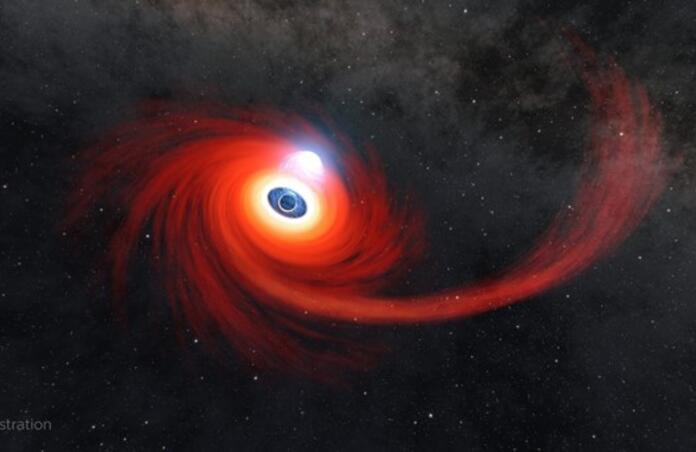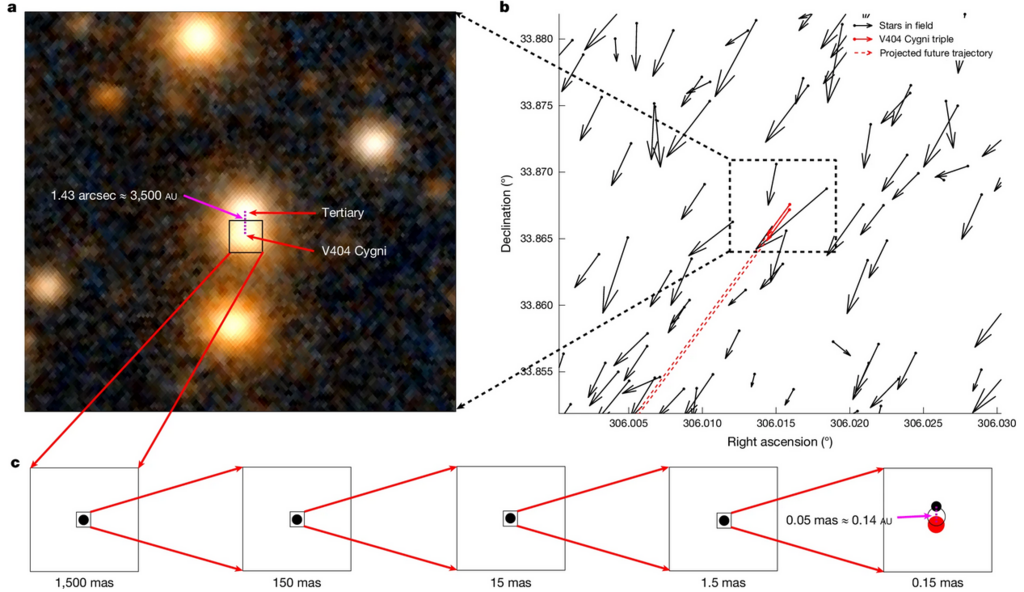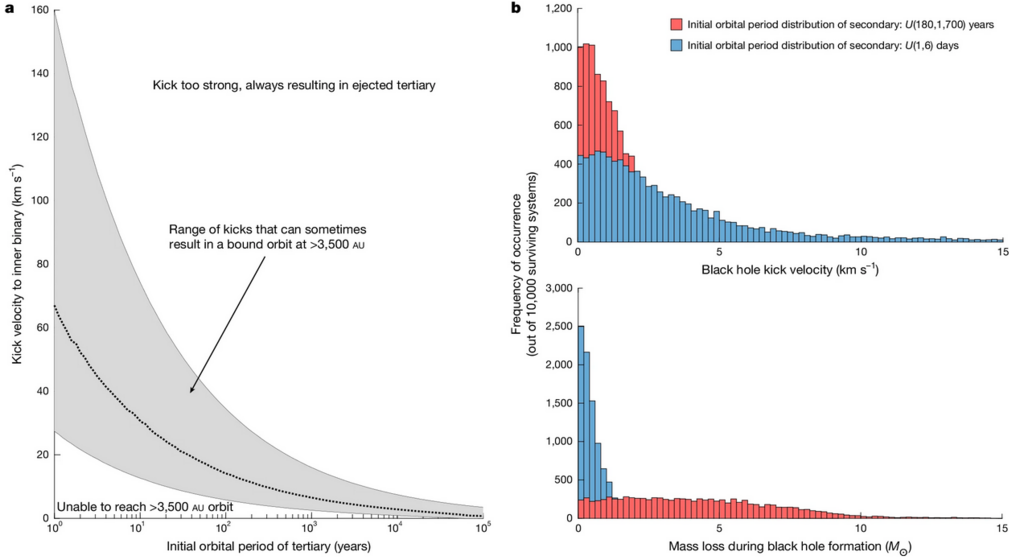Black Hole Triple Presents Evidence for Direct Collapse Models

Once a star has exhausted the nuclear fuel available in its core, it can no longer exert the necessary outward pressure to counteract the gravitational pressure from its own mass. Massive stars can bypass both electron and neutron degeneracy pressures, leading to a complete core collapse. During this collapse, intense shockwaves are generated that blow apart the stellar envelope in a type II supernova. If the explosion is asymmetric, the resulting shockwaves impart a net force on the stellar remnant, causing it to experience a so-called natal kick and resulting in motion in the direction of the kick. Typically, such supernovae are highly asymmetrical, leading to significant net velocities due to natal kicks. These velocities often range from several hundred up to around 1,000 km/s.
However, there are models for black hole formation that bypass the need for supernovae. In the most massive stars, these ‘direct collapse’ models suggest that instead of a sudden and rapid collapse, the core could undergo a more gradual implosion. Any shockwaves generated during this process are typically negligible and largely symmetric, as the gradual changes allow the system time to return to equilibrium. As a result, the natal kick is minimal, although direct evidence for such a process remains unobserved.
That is until a study led by Kevin Burdge identified that the black hole binary, V404 Cygni might instead be a triple system, carrying along with it an additional companion. While the black hole is tightly bound with a red giant separated by 1.4 AU, the study concludes that they are trailed by another subgiant star at 3500 AU.

Their investigation leveraged astrometric measurements of the V404 Cygni system, collated from Gaia, along with imaging from the Pan-STARRS, Hubble Space Telescope, and Keck observatories. They found that the proper motion of the proposed tertiary object closely aligned with the centre of mass of V404 Cygni, indicating that the two bodies were moving together. Furthermore, spectroscopic observations from the VLT/X-shooter and Gemini GMOS revealed systematic Doppler velocities that agreed, indicating that the objects also appeared to move together along the line of sight. In addition, the significant separation meant that the tertiary object would have a negligible influence on the motions of primary-secondary pair, explaining why it had not been identified as a companion until this more in-depth investigation.
This discovery is curious, as maintaining gravitational influence over a body at this separation is incredibly delicate. Due to the random orientation of velocity vectors, one could have expected the natal kick to quickly tear apart any bodies at such distances, as the black hole outpaces the acceleration of its distant companions.
As such, the team conducted a series of simulations to investigate the history and formation of V404 Cygni. Through variation of certain critical parameters, such as the directions and mass of ejecta, the study could constrain these in the context of V404 Cygni. Naturally, of particular interest were the range of values for the natal kick of the black hole. Their findings indicate that to maintain its current stability, the natal kick must have been approximately 5 km/s. This value is significantly lower than typical expectations, prompting the team to suggest that V404 Cygni presents the first observational evidence supporting direct collapse models.

To further explore the dynamics of V404 Cygni the team plan to conduct more detailed investigations into the companion’s orbit. Burdge expressed optimism about the prospects for upcoming high-resolution observations, particularly with the eventual completion of ESA’s Extremely Large Telescope and the GRAVITY instrument, which could yield unprecedented insights into this unique system.
--
Journal Source: K. Burdge et al, The black hole low-mass X-ray binary V404 Cygni is part of a wide triple, Nature, (2024), DOI: https://doi.org/10.1038/s41586-024-08120-6
Cover Image Credit: NASA/JPL-Caltech
